The Central American country of Panama feels to me somewhat of a hidden gem. It’s often overlooked in favor of its bordering neighbors Costa Rica and Colombia, but Panama has everything you could want in a destination and quite literally offers “a little bit of everything.” In as little as one week in Panama, you can experience its bustling city life, remote tropical islands, breathtaking mountains and nature, great food, and a vibrant culture all while being very affordable to Western travelers. This perfect Panama itinerary combines all the major points of interest in just 7 days, taking you from the capital, Panama City, to the mountains of Boquete, and finishing off in the islands of Bocas del Toro. Find out why I believe Panama is one of the most underrated destinations in Central America in this comprehensive Panama travel guide.
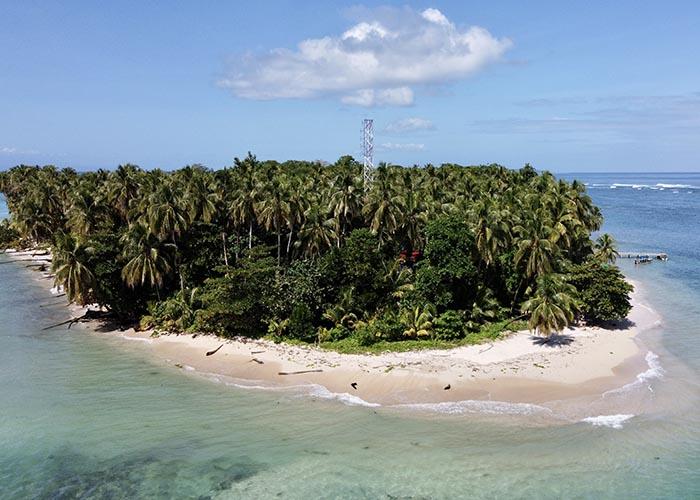
Note: This itinerary is based around spending 2 nights each in Panama’s most popular areas: Panama City, Boquete, and Bocas del Toro (with an optional bonus stop for San Blas.) For longer Panama itineraries, add nights in the regions that most appeal to you. (My suggestion is Bocas del Toro!) Table of Contents – Jump to: Panama City Boquete Bocas del Toro San Blas Panama Travel Tips
You are viewing: What To Do In Panama For A Week
Day 1 – 2: Panama City Itinerary
Begin your trip by flying into and spending the first two days in Panama City, Panama. Panama City is a large modern metropolis filled with futuristic skyscrapers, a historic core with colorful, Spanish colonial buildings, great restaurants, exciting nightlife, and friendly people. In these first 2 days, you’ll get to explore the best of the city and of course, visit the monumental Panama Canal.
How to See the Panama Canal
Visiting the Panama Canal should be one of the top priorities for your time in Panama City. The Panama Canal is a manmade waterway that connects the Atlantic with the Pacific Ocean and divides North and South America, giving ships the ability to cross oceans much more quickly and effectively. It is one of the most significant engineering advancements ever created. Successfully built by the US, the canal consists of artificial lakes, channels, and locks, and is fascinating to witness its technology. The ships usually take 15 minutes to go through the lock, and then 8 – 10 hours to travel the length of the canal.
The Miraflores Locks are the closest of the 3 locks to Panama City and can easily be reached by Uber for as little as five dollars (about 30 minutes from the city) or by public transportation. You can take a tour by boat through the Panama canal, or you can visit the Miraflores Locks by land, (which is what I did) through the Miraflores Visitor Center, which has observation decks and viewpoints, along with exhibitions and an IMAX film about the canal.
Entry to the visitor center to see the Panama Canal costs between $10 – $20 per ticket. A tour guide is usually not necessary as the visitor’s center is very informative, as is the Panama Canal Museum in the Casco Viejo neighborhood of Panama City. The best time to visit the Panama Canal is when there is the most transit, so try to plan to be there when the Canal is at its busiest, usually between 9:00 am to 11:00 am or between 2:00-4:00. Transit times vary daily, so make sure to check the transit schedule on the visitor’s center website to time your visit accordingly. For more precise times and types of vessels, you can also check the maritime transit schedule here.
Casco Viejo
The historic district of Casco Viejo, which is also known as Casco Antiguo (translating to Old Town/Quarter) is Panama’s hippest neighborhood and is a designated UNESCO World Heritage protected district. Filled with old colonial buildings updated with stylish and modern interiors, trendy rooftops, restaurants, bars, cafes, and other little gems, this is undoubtedly where you’ll want to spend a lot of your time. Casco Viejo is small and walkable, and many streets are cobblestone, so wear comfortable shoes!
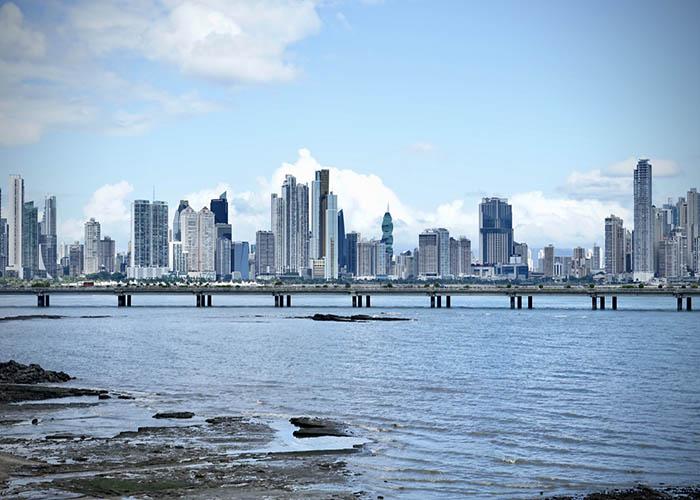
An ideal day in Casco Viejo would go a little something like this:
- Start your morning with geisha coffee (the famous Panamanian coffee variety) at Cafe Unido, the best coffee chain in Panama. If it’s Sunday, make sure to indulge in the famous Sunday brunch next door at The Dining Room inside the American Trade Hotel. Not Sunday? No problem, Mahalo also offers a great breakfast every day of the week.
- After you’re fueled with breakfast and Panamanian coffee, head over to the Museo del Canal Interoceáno de Panamá, AKA the Panama Canal Museum and/or Museo de la Mola (MUMO) AKA the Mola Museum. Molas are the artwork made of stitched textiles by the indigenous people of Panama. You can find them sold all over Panama and make for lovely souvenirs. For either museums, be sure to make a reservation in advance.
- Next, head to Mercado de Mariscos for some fresh seafood for lunch or a snack. It is about a 10-minute walk just outside of Casco Viejo, or you can take an Uber or cab for a few bucks. This seafood market has dozens of outdoor stalls selling fresh ceviche and fried fish. The vendors each have staff members somewhat aggressively shoving menus at you as you walk by, but pay no mind and just keep walking. You’ll want to find the stall that has the most locals dining there (i.e. no Panama hats in sight!) as that will typically be the best ones. The stalls on either ends may look the busiest to you as they are the most easily accessed, but make sure you walk the full length from end to end before determining which stall looks the most happening.
- For a midday treat, stop and cool off with an afternoon popsicle made with fun flavors at Palettamerica.
- Spend the afternoon wandering through the shops and boutiques, making sure to stop at Victor’s Panama Hats to pick up a genuine Panama hat to buy as a souvenir or wear on your trip.
- In the early evening, head to the rooftop terrace at CasaCasco for sunset drinks and happy hour.
- After working up an appetite with some drinks, stay for dinner at one of CasaCasco’s 3 different restaurants, or choose one of the other great dining options in my restaurant section below.
- End the night with drinking, dancing, and bar hopping at the Casco Viejo bars and clubs. See my recommendations in the Panama City nightlife section.
Note: If you’re not staying in or walking distance to the Casco, you can always Uber back to your hotel anytime for a break as it’s only a few bucks to get around Panama City!
Amador Causeway
Another popular activity in Panama City is Amador Causeway, a boardwalk with restaurants and attractions. Many people enjoy renting a bike or electric scooter to ride down the causeway, but you can also choose to just take a stroll. There are also several different activities and sites you can enjoy, which can be found here.
Day Trips from Panama City & Panama City, Panama Beaches
As far as top things to do in Panama City and other tourist attractions, there actually isn’t a whole lot to see within the city itself. That said, there are some popular attractions close by that you can enjoy for a few hours, a half-day trip, or full day. If you’ve already seen the Canal and spent time exploring Casco Viejo, and still have time permitting, you can choose any of the following activities for a full or half-day trip:
Monkey Island: Take a boat tour down the Panama Canal to visit different islands to get up close and personal with monkeys and other wildlife. If you’re lucky, the monkeys will jump right into your boat with you! (Make sure to book a morning tour as that is when the monkeys are most active.) Tour costs begin around $50/adult and goes up when combined with other sites to tour. Tour duration is typically around 2 – 4 hours.
Pearl Islands: If you’re craving beach time, the Pearl Islands are an archipelago off the Pacific Coast of Panama and offer white sand beaches, beautiful waters, and are great for snorkeling, scuba diving, or whale watching. To reach the Pearl Islands from Panama City, take the 1.5-hour ferry from Punta Pacífica or the Amador Causeway. The rate for round-trip ferry is around $100 per adult. You can also fly to the Pearl Islands or go on a guided tour. Duration: half to full-day trip.
Taboga Island: Taboga Island is one of the closest beach destinations to Panama City, and can be reached within 30 minutes by ferry and costs $24 per adult round trip.
Emberá Village Tours: Take a day trip to visit and immerse yourself in the culture of the indigenous tribes of Panama. Tours typically include a boat ride through the Gamboa rainforest to reach the village where you will spend the day with them learning about the culture and community. You’ll hear traditional music, learn about the shamans, medicinal plants, art, get to hike, and more. Includes lunch. Cost is around $100 – $200/adult. Duration is a full-day tour. This tour can also be combined with Monkey Island.
Restaurants in Panama City, Panama
Panama City offers a great variety of food thanks to the significant presence of immigrant communities such as Jewish, Chinese, and American. You’ll find stand-out restaurants from traditional Panamanian and Caribbean cuisines, to international fare such as Mexican, Italian, Mediterranean, Asian-fusion, and more. As a Jewish traveler, I was particularly excited by all the options for kosher dining, which can be hard to come by when traveling outside of the US.
While dining abroad, I like to chase an ultra foodie experience, leaning into the most gastronomic restaurants along with the authentic and ultra-local. In a metropolitan city like Panama, there are opportunities for both, however as we make our way to the more remote areas of Panama where there will be plenty of opportunities for more simple, local dining, so my priority in the city was towards the gastronomic, or elevated local cuisine (i.e. no Italian or Japanese food for me.) You may also notice that many of the best restaurants in Panama City are found in the neighborhood of Casco Viejo, which doesn’t come as a surprise to me!
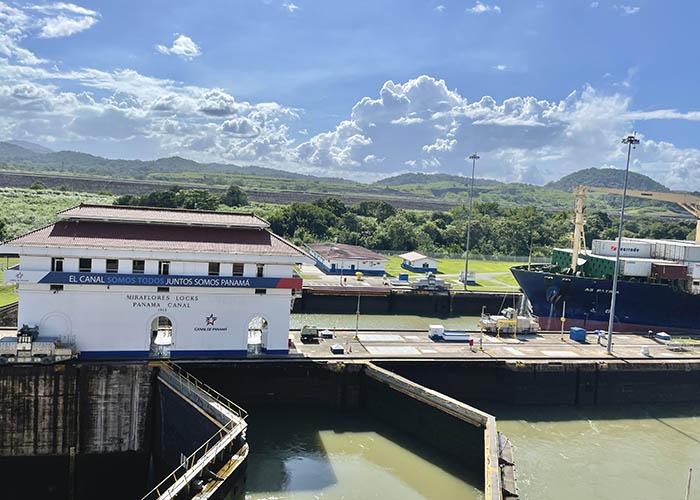
Here are some of the top restaurants in Panama City:
Maito: Designated as one of the 50 best restaurants in Latin America. Maito is a stylish restaurant that serves Panamanian fusion with an international flair.
Mercado de Mariscos: A fresh and local seafood market with dozens of stalls specializing in ceviche and fried fish.
Fonda Lo Que Hay: A casual and affordable Casco Viejo neighborhood restaurant by Panama’s Top Chef winner serving Panamanian street food with local ingredients.
Tacos La Neta: An awesome rooftop taco spot on the terrace of the Selina Hotel in Casco Viejo.
Botanica: A super Instagrammable cafe and pizzeria with photo-worthy food.
Tantalo Kitchen: A trendy rooftop bar and restaurant located at the Tantalo Hotel in Casco Viejo.
Cafe Coca Cola: One of the oldest and most famous cafes in Panama serving cheap Panamanian diner food.
Aria: The best kosher meat restaurant in Panama City (in my opinion, aside from The Chief BBQ, which I also loved and was only available for delivery at the time I visited.) For dairy restaurants, (since kosher does not mix meat and dairy) Blame Kiki is so cute and Instagrammable, and Kava is highly loved as well. A full list of Kosher restaurants can be found here.
Cafe Unido: My favorite coffee chain in Panama.
Granclement: The best ice cream in the city with unique flavor combinations and all-natural ingredients.
Palettamerica: Popsicle spot with a plethora of fun flavors.
Panama City, Panama Nightlife
Most of the best nightlife in Panama can be found in either Casco Viejo or in El Cangrejo, I actually had the opportunity to celebrate the New Year in Panama, which was very exciting, and a great time spent on the rooftop at CasaCasco. There were fireworks everywhere in the city with lots of celebrations all over late into the early morning.
Here are some of the best places for a night out in Panama City: Salvaje: A luxe restaurant/bar that has one of the trendiest rooftops in Panama City
Tantalo: Another trendy rooftop bar at the Tantalo Hotel
La Tana: A more upscale supper club vibe
Teatro Amador: An old theater turned nightclub
CasaCasco: An upscale complex of 3 different restaurants, a nightclub, and rooftop terrace with the best views in Casco Viejo.
Where to stay in Panama City, Panama
The best area to stay in Panama City is either in Casco Viejo or close to it in neighboring areas. Note that the 5-star luxury chain hotels in Panama City are often much more affordable than in the US, so be sure to check their rates!
Here are the hotels I recommend:
JW Marriott: This is my favorite hotel in Panama City. My large suite came with a balcony with amazing views, and their stunning rooftop infinity pool is one the best in all of Latin America.
American Trade Hotel: This one is another favorite of mine! A super hip boutique hotel in Casco Viejo, and the “it” place to stay in Panama. It only has 50 rooms, so be sure to book early.
Tantalo: A more budget-friendly alternative to the American Trade Hotel, and another hot spot in Casco Viejo.
Waldorf Astoria: One of the few other 5-star options within Panama City. I stayed here and it was nice, but I prefer the JW.
W Panama: The W Hotel is always great, and a good affordable-luxury option in Panama City.
Day 3 – 4: Boquete
Read more : What Are Mulled Windows
On day 3, take a quick, 1-hour early morning flight from Panama City (PTY) to the Chiriqui region’s city of David (DAV). From David, you can either rent a car or take a 45-minute taxi ride or shuttle to the beautiful, mountainous region of Boquete.
Boquete is known for its immersive nature, hiking and adventure activities, Volcan Baru, world-famous coffee plantations, abundant blooming flowers, and relaxation in the beautiful natural surroundings. It is also a popular retirement community for American expats young and old, as recommended by AARP for being one of the best places in the world to retire.
Note: The itinerary I have created is fast paced, showing you as much of the country as possible in a short amount of time. If this is not your style of travel (i.e. if you prefer slow travel) or if you are not much of a hiking/nature person, Boquete is the region I would skip and go straight from Panama City to Bocas del Toro found in the next section. Many people say Boquete is a must, and I am thrilled to have spent time in it, but if I had to cut one it would sadly be here because I prefer the beaches over mountains. If you don’t mind traveling every 2 nights or have more days to travel, definitely include Boquete as a stop on your itinerary.
Things to do in Boquete
In Boquete, you’ll want to take advantage of the fresh mountain air and beautiful natural surroundings by partaking in adventure activities such as hiking, zip-lining, white water rafting, and more. Most activities require going with a guided tour, which you can book through your hotel or directly at the parks.
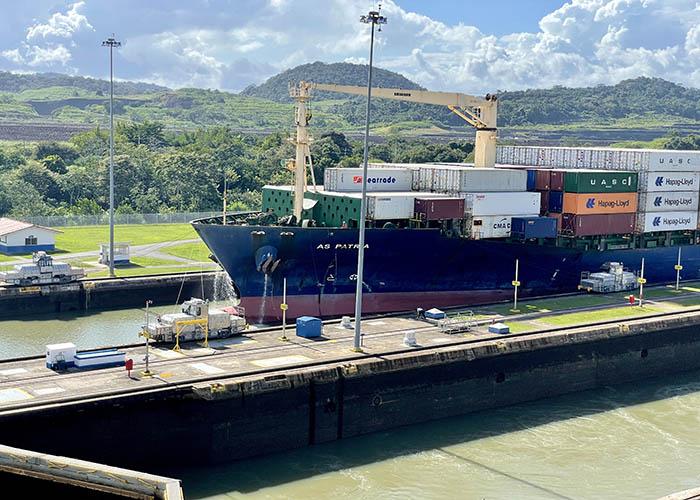
Boquete Tree Trek: This adventure park high in the lush mountains of Boquete offers the second-highest and longest-hanging bridges in Central America. They also offer ziplining and coffee tours. Guided tours only.
Volcan Baru National Park: Hiking the actual volcano is not the easiest (takes many hours in varying climates) but you can still visit and hike around the park (Los Quetzal Trail at the base of the volcano) as an alternative, or take a 4×4 up to the top. The top of the volcano is where you can see the Atlantic and Pacific oceans at once. If you do plan to hike the Volcano, make sure you do it with an experienced guide for safety!
Coffee Plantation Tour: Boquete is known for the world-famous “Geisha coffee” which is grown in the volcanic soil of Volcan Baru, making it some of the most expensive in the world. There are many different coffee tours in Boquete, with Finca Don Pepe being a great generational family and locally-owned option.
Swim in the river: Cool off and swim in the easily-accessible river of this natural canyon slot, Los Cangilones de Gualaca, which is about 40 minutes away from Boquete.
Whitewater rafting: Take an exciting ride whitewater rafting with an experienced guide on the Chiriqui Viejo River.
Chase waterfalls: Take a 2.1-mile hike through the cloud forest and be rewarded with waterfalls on The Lost Waterfalls Trail.
BCP Tuesday Market AKA The Gringo Market: Every Tuesday there is a market run by expats with both local and expat vendors selling crafts and produce. It’s a great place to pick up souvenirs and support the local farmers and artisans of Boquete.
Restaurants in Boquete, Panama
Many of the restaurants in Boquete are actually run by expats, but there are plenty of options for local dining as well. Here are the top choices for where to eat in Boquete:
The Rock: This is my number one recommendation and a popular restaurant amongst locals, expats, and tourists. They offer local and international upscale cuisine in a beautiful indoor and outdoor setting.
The Fish House: Another favorite. This casual seafood spot is known for its amazing fish & chips, and corvina (seabass) prepared 8 different ways.
Sugar and Spice: A popular cafe and bakery with breakfast items as well as sandwiches and fresh-baked pastries and bread.
Morton’s Bakehouse: A Kosher parve (dairy-free) bakery with great bread and awesome bagel sandwiches.
The Panamonte: A highly regarded fine-dining restaurant at The Panamonte Inn and Spa.
El Sabroson #3: A super local, cafeteria-style restaurant with cheap and simple eats in 3 different locations (#3 seems to be the favorite.)
RetroGusto: Farm-to-table Italian dining.
Boquete Brewing Company: If you’re looking for nightlife, this is a popular hangout for both travelers and locals.
Big Daddy’s Grill: An expat hangout and serving typical bar food sometimes accompanied by live music, karaoke, or dancing (depending on the night.)
Fresas Mary: A cute little strawberry shack on the way to Volcan Baru which serves fresh strawberries and cream, strawberry milkshakes, and other strawberry sweets.
Where to stay in Boquete
Boquete is a much less developed region than Panama City (which is why it’s great!) but with that comes very few options for true luxury accommodations. The hotels here are mostly basic, however, here are a few nice ones I recommend:
The Inn at Palo Alto: This is a popular option for luxury travelers. The property is in a beautiful natural setting set against the Boquete River which you can hear from all over, adding to the tranquility of the environment. The rooms are simple casita-style accommodations, and the hotel has a nice little infinity pool and hot tub with lovely nature views.
Valle Escondido: A hacienda-style resort with a local residential feel, as it’s set within a community golf course.
Hotel Panamonte: A quaint cottage-style boutique hotel owned by the former President of Panama, Juan Carlos Varela.
Hotel Ladera: A slightly more modern hotel than what you typically find in Boquete! The location is a quick, 5-minute walk to downtown Boquete.
Day 5 – 6: Bocas del Toro
The last region you’ll visit is the islands of Bocas del Toro. I love to save the beach for last because I think it’s a great way to end a trip.
Bocas del Toro is a beautiful Caribbean archipelago off the east coast of Panama near the border of Costa Rica. There are about 9 inhabited islands and over 200 islets in Bocas del Toro. The main Island, Isa Colon, and its central hub known as Bocas Town is popular amongst backpackers and young travelers, giving it a very fun party vibe, but there are plenty of other more serene islands if that is what you prefer.
Related: Complete Bocas del Toro Travel Guide
Boquete to Bocas del Toro
From Boquete, you will travel to Bocas del Toro either by shuttle or a driver, or you can pay for a one-way rental which was my preferred option. You can also fly, but it would require backtracking to Panama City so it’s not really worth it. Most people like to take a shuttle (such as Hello Travel Panama) and find it pretty painless and affordable. The drive is about 3.5 hours to Almirante then around a 30-minute water taxi to Isla Colon. From there, you will either stay on Isla Colon if that is where your hotel is, or take a water taxi to your hotel’s island.
We rented our car from National at the David airport (drove to Boquete with it and used it there) then dropped it off at the Leiza Secure Parking lot in Almirante before taking the water taxi transport to Isla Colon with a company called Valencia. (There are several water taxi options at the port, this one was recommended to us by National.) The drive from Boquete to Almirante was a pleasant one, through lush mountains and passing by small waterfalls. There were a few areas of unpaved roads, two-lane highways, and a passport checkpoint getting into Almirante, but overall it was an easy and nice drive. The downside of driving is the one-way rental fee, making the overall rental price around $50 a day.
Things to do in Bocas del Toro
Bocas Town on Isla Colon is where you’ll find the most action, with plenty of restaurants and bars. Aside from that, naturally, activities in Bocas del Toro revolve in and around the water. To get around the Bocas, you’ll take a water taxi to the different islands, which only costs a couple of dollars, usually between $2 – 5 a person. For me, Bocas del Toro is kind of reminiscent of island hopping in Southeast Asia, such as in the countries of Thailand or Indonesia.
Taking an island-hopping day tour is an absolute must. I recommend Castillo’s Charters – they are fantastic and provide both group or private Island hopping tours in addition to water taxi services. (Feel free to DM them on Instagram or send a Whatsapp message — they are very helpful.) I set up a private tour, which allowed us to create a totally customized trip and visit the different sites at our own pace.
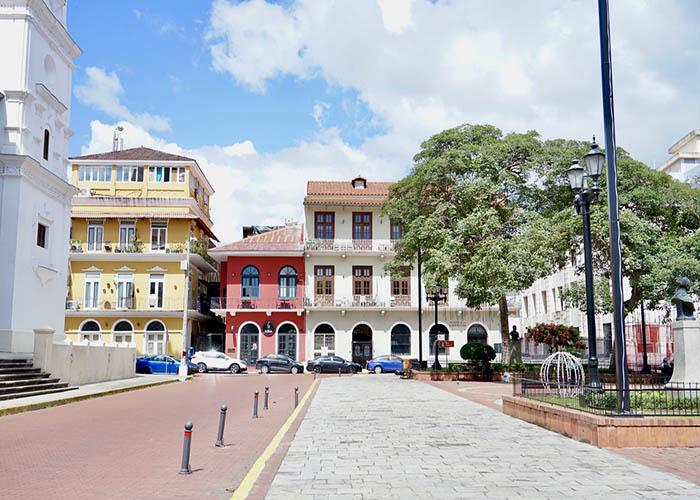
Some popular places to see in Bocas del Toro include:Sloth Island: An lush and foresty island where you tour around the perimeter by boat and hopefully see some sloths. Unfortunately, we did not see any sloths, but they can be found on other islands as well!
Starfish Beach (Playa Estrella): As the name suggests, this beach is full of big, bright starfish and is one of the prettiest beaches on the islands. This beach was my favorite and I recommend it as a must-see! We were told that sometimes no starfish are seen, however, this was not my experience. Get here early in the morning or late afternoon to avoid the crowds as it is a very popular beach. There are a few beach bars here and the water is crystal clear and calm, making it a really nice place to hang out. Just remember not to pick the starfish up out of the water (even for a quick photo) as it can be very harmful (and deadly) to them. Many tours will take you to Starfish Beach, however, you can also get here on your own. To reach Starfish Beach from Bocas Town on Isla Colon, first, you must get to Bocas del Drago, and from there it is a few minutes water taxi ride to the beach (costs a couple of dollars) or a really nice 20-minute walk along the coast. To get to Bocas del Drago from Bocas Town you can either take a taxi (about 30 minutes and around $15-20 one way), the bus ($7 and about 45 minutes), or a water taxi, (which also takes about 30 minutes and costs around $5.)
Zapatillas: A set of 2 islands as part of a national park with some of the most beautiful beaches and clear waters in all of Bocas del Toro. These islands are paradise and an absolute must for any island hopping trip.
Coral Cay: A coral reef in the middle of the sea and the best place in Bocas to snorkel – lots of colorful fish.
Dolphin Cay: Where the dolphins hang out, and yes, we were lucky to see some!
The Floating Bar: a literal floating bar and restaurant in the sea that offers drinks, music, yoga, and water floaties to float and cool off with.
Hollywood: A cay with the name Hollywood because there are lots of starfish seen from the clear shallow water, but you’re not able to leave the boat here. If you’re going to Starfish Beach, you can skip Hollywood.
Partying and Nightlife in Bocas del Toro
If you came to party in Bocas del Toro like many do, there are plenty of opportunities to get your party on at the bars in Bocas Town. However, two party experiences you shouldn’t miss are:Filthy Friday: Happening every Friday, this multi-island bar crawl is one of the biggest events in Bocas with live DJs, drinking, dancing, games, and surprises.
Black Magic Bocas: A booze and party cruise on a pirate ship! Enjoy island hopping, swimming, lounging, partying, and good vibes.
Read more : What Is A Reverse Alert
Tip: Check out @bocas.buzz and @thebocasbreeze on Instagram for daily happenings in Bocas!
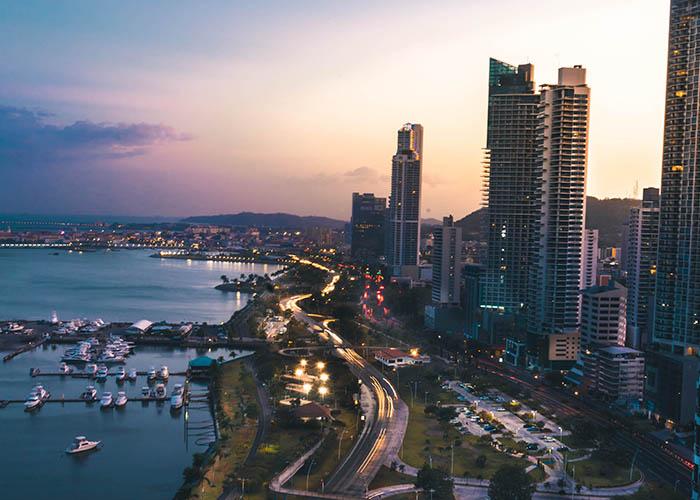
Bocas del Toro Restaurants
There are many great places to eat so I recommend getting out of your hotel and exploring! Fresh seafood is of course the main appeal, best enjoyed with an ice-cold local beer or passion fruit margarita. Some of the best restaurants in Bocas del Toro are:
El Ultimo Refugio: One of the best (if not the best) restaurants on the islands. They serve local/Caribbean food and are a must-visit on Isla Colon.
Bibi’s on the Beach: A beach bar/restaurant on Isla Carenero with awesome ceviche and fried fish + a swimmable beach.
Raw Fusion: A popular Asian-fusion restaurant in the heart of Bocas Town.
Falafel Bocas: Amazing Kosher falafel and Israeli food run by the Chabad House in Bocas Town. If you are Jewish you should definitely consider having Shabbat dinner here alongside up to a hundred of Jewish travelers!
Leaf Eaters Cafe – Vegan/Vegetarian spot on Isla Carenero with great salads, tacos, and more.
Om Cafe – A very loved and popular Indian/International restaurant in Bocas Town.
Amaranto – Definitely the best coffee in Bocas Town / on all of Isla Colon
Cafe del Mar – Right next to Amaranto, a cute little cafe that’s great for breakfast.
Where to Stay in Bocas del Toro:
Deciding where to stay can be a bit of a challenge, so I’m here to help. First, you must know that if you are looking for luxury accommodations, they are few and far between. (There is a Viceroy opening up sometime in 2026 though which is exciting, albeit bittersweet because that means it’s losing some of its local authenticity as it’ll be the first Western chain hotel.) Most of the accommodations are pretty simple, especially on Isla Colon. You’ll find either eco-style lodges or traditional Caribbean ocean-front housing. There are 3 main islands where most of the action is which are Islas Colón (the main island), Carenero, and Bastimentos.
Step one is to decide whether you want to be in the center of the action (Isla Colon/Bocas Town) or if you want to have a more secluded stay. Being within walking distance of many restaurants and bars can be a plus, but I have to warn you that Isla Colon/Bocas Town can be very noisy from the late-night parties.As a luxury traveler, finding the right hotel was at the forefront of my mind, however, I didn’t want to be too far from the main island(s) so I could easily go back and forth instead of spending most of my time at the resort. I also wanted to spend at least one night in an overwater bungalow. This was a bit of a challenge as there are a limited amount of luxury hotels and overwater villas close to Isla Colon.
Bocas del Toro Overwater Bungalows & Luxury Hotels
Bocas Bali is my top choice for a luxury overwater bungalow hotel. It is the most similar experience to Bora Bora or the Maldives overwater resorts and is about a 15-minute boat ride away from the main island, Isla Colon. With a small number of rooms, this hotel can book up fast, so be sure to reserve in advance.
Red Frog Beach Island Resort is another popular option for luxury-minded travelers — probably the most popular. It’s not an overwater resort, but it is on one of the nicest beaches in the Bocas. It is also about 15 minutes from Isla Colon via water taxi.
There are also a handful of overwater eco-lodge-type bungalow hotels. They do not have all the luxury amenities you may be used to, but are a great option to get the overwater bungalow experience in a more affordable way. These include Sol Bungalows (5 minutes from Isla Colon), Azul Overwater Resort (45 minutes away) Punta Caracol Acqua Lodge (30 minutes away) and Eclypse De Mar (10 minutes away).
Eclypse De Mar is a lovely option for an overwater bungalow, though it is an eco-lodge, so there is no electricity during the day (but you really don’t miss or need it, and is an experience in itself!) Their honeymoon overwater villas are spacious, with a nice-sized outdoor deck, and an open glass coffee table within the living area to see the fish swim from below. They offer free rentals for kayaks, snorkel gear, and stand-up paddleboards, as well as a daily breakfast that you fill out a form for your desired breakfast options and they deliver it straight to your room at your preferred time. What’s especially unique about Eclypse De Mar in particular that other overwater resorts don’t offer, is that it is built on its own private nature reserve, which you can walk through to see sloths, monkeys, and lots of other wildlife. You can also stay in one of their treehouses within the nature reserve, which is also a pretty unique experience. The only drawback to staying at Eclypse De Mar is that it can be noisy during the night with music blaring from the nearby islands, though they do provide earplugs for that. Staying there was a fun experience to have for a short stay, as the accommodations and setting were very different from the other overwater bungalows I’ve stayed in.
Lastly, for another type of unique stay, eco-luxury, glamping, and treehouse options, you must check out La Loma Jungle Lodge and Palmar Beach Lodge.
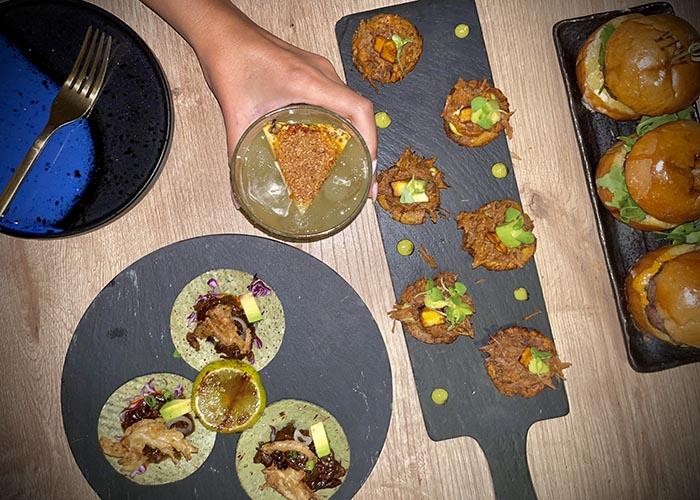
As a final note, if you want to stay in Bocas Town on Isla Colon to be in the center of the action or if you need to catch an early flight as I did on my final night in the Bocas, Azul Paradise is nice and modern, and what I believe to be the nicest option in Bocas Town. (Book on the top 2 floors for a penthouse.)
Day 7: Back to Panama City
Say farewell to the Bocas and if you’re flying home internationally, sadly take your 1-hour flight back to Panama City from the small airport in Bocas Town. Note: You can also split up your time in Panama City by doing one day in the beginning and one at the end (up to your personal preference.) On your last day in Panama, if you’re not immediately flying home, get in that last restaurant from your list, book a spa treatment at a hotel, or if time permits, one last BIG adventure…
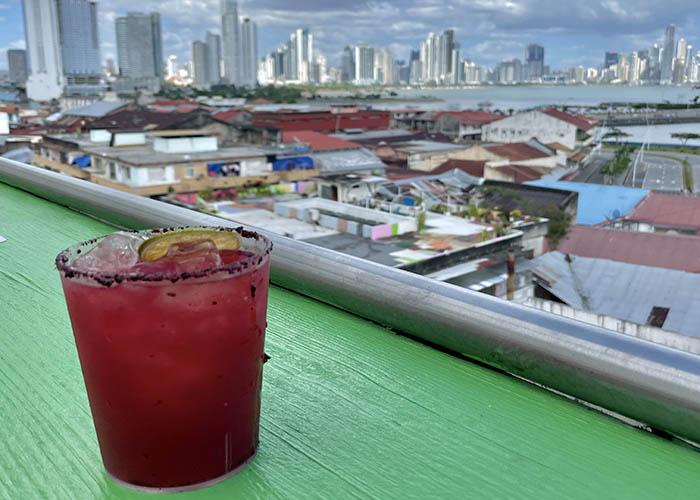
San Blas Islands
A popular day or overnight tour from Panama City is to the Islands of San Blas, known locally as Guna Yala. If your time in Panama permits at either the beginning or end of your trip, this stop comes highly recommended.
San Blas Islands are some of the most picture-perfect, untouched, remote islands in Panama. So much so, that the only accommodations are mostly local huts made from natural materials found on the islands, many with sand floors. Of the 378 islands in the archipelago, only 49 are inhabited. The islands are governed by the natives, known as Kunas or Gunas and tourists are not able to visit the islands freely in order to preserve their authenticity. You may not even take a coconut from the islands, as that is their main export and would therefore be considered stealing! There is no running hot water, virtually no electricity, and an entire island could share one bathroom, however, the setting is simply paradise on earth.
Panama City to San Blas – How to get to San Blas Islands
Besides the bare accommodations, the other caveat is that it is not so easy to get to. There are many San Blas tours from Panama City that can take you on a day trip (early morning to late night) or an overnight trip, however, it consists of a 3+ hour drive plus a 45-minute boat ride to reach the islands. (Or you could take a flight for about $350 round trip instead of driving, though this is less common.) That said, if having a completely unplugged, rugged, and culturally authentic getaway on a pristine island where you will do nothing but relax in paradise sounds appealing to you, the trek may be part of the fun.
Is San Blas worth it?
In general, I would say if you have the time and energy, visiting the San Blas Islands can be an incredible, once-in-a-lifetime type of experience. For me personally, having to rough it was not something I was after on this particular trip. It was a tough call, but in just one week I had to ultimately decide between visiting San Blas. cutting short Panama City (and my long list of restaurants I wanted to try), or perhaps cutting out Boquete or Bocas Del Toro entirely. I really wanted to experience the geographic variety Panama has to offer from the city, to the mountains, to the islands, and with Bocas Del Toro also coming highly recommended and a little more my speed at this point in my lifelong travel journey, San Blas, unfortunately, had to go.Having spent time visiting remote islands throughout the world, including all over Central America, in a way they sort of start to all blend together. Don’t get me wrong, I am not jaded by islands and still believe there’s nothing more beautiful on earth than a tropical paradise. Islands and beaches are my specialty and my favorite places to travel to – without a doubt – but at the end of the day (or with limited days, I should say,) an island is an island when they are undeveloped and therefore provide more or less the same type of experience.
The most exciting part to me was the prospect of being able to submerge in the local Kuna environment and learn about their culture, but I just wasn’t up for roughing it this time. I crave authenticity and local experiences while traveling, but in the end, I think I prefer the variety Bocas Del Toro offers, socializing with their locals, and there were some pretty fantastic islands there that got the job done great. All this is to say, the contrast between these two archipelagos may be interesting for travelers who have the time, and I absolutely wouldn’t mind returning to Panama one day to experience San Blas.
Panama Travel Tips
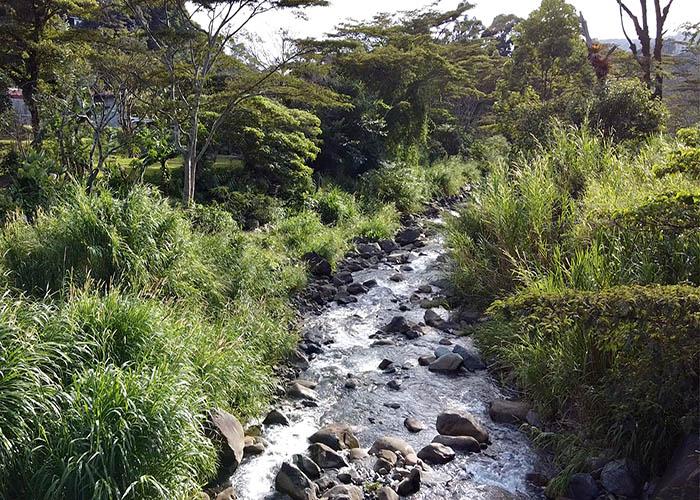
Getting to Panama:
From the US, Delta offers direct flights from major cities such as Los Angeles, New York, Orlando, and Atlanta (usually just once a week, which is great for this itinerary.) COPA Airlines also offer non-stop flights daily in some cities with more departure options in several countries in North, Central, and South America.
Best time to visit Panama and Panama’s climate:
Panama has a hot, humid, and tropical climate year-round. For most of the year, it rains in Panama with the driest months or “dry season” being December, January, and February, making December – February the best months to travel to Panama. The rest of the year is the “rainy season,” meaning it could rain any time. Don’t rely on the weather forecast apps, as they are usually inaccurate. The forecast will often predict rain which could mean anything from 10 minutes of rain to several hours, or sunshine and clear skies where you are but a torrential downpour just miles away. Be prepared with an umbrella.
Currency in Panama:
While the official currency of Panama is the balboa, the balboa and US dollar are tied and the US dollar is used throughout the country. (They don’t print money there, but you will receive both US and Panamanian coins as change.) Outside of the city, it is a good idea to have cash with you, particularly prior to arriving in Bocas del Toro because many places are cash-only and there is only one bank/ATM in the islands.
Is Panama affordable?:
Panama is relatively affordable for US travelers, but when compared to other Central American countries such as Costa Rica or Belize, it is on the slightly more expensive side. That said, 5-star hotels cost under $200 a night in Panama City, Ubers just a few dollars to get from one side of town to the opposite, and domestic flights are around $100 one way. Restaurants, cocktails, and coffee are all also much cheaper in Panama than in the US. The average daily cost for a luxury vacation is between $100 – $200 per person in the season, and in the high season, double that.
How to get around Panama:
In places like Panama City, Uber is easy and cheap. I recommend taking an Uber over regular taxis whenever you can as they cost less and are less of a hassle, but in a pinch, (i.e. you don’t want to wait for an Uber while taxis are abundant) a taxi is fine. Outside of Panama City such as in Boquete or Bocas del Toro, Ubers may be scarce or non-existent. Whenever taking a taxi in Panama, make sure to negotiate the price upfront before getting in the cab as they don’t use meters. Taxi drivers will surely try to rip tourists off, so as a rule of thumb whatever they quote you, you should negotiate to pay about half. There is also an efficient public transport system should you wish to use it.
Do they speak English in Panama?:
Spanish is the official language in Panama, however, English is widely spoken in the major tourist cities. In more remote areas and small towns, most people do not speak English. In the interest of being a socially-responsible traveler, I always recommend learning a few words, (at the very least hello and thank you) in the local language. It is always appreciated by the locals and you may get better service because of it. 🙂
Is Panama safe?:
Like many other destinations, safety varies from place to place within a country or city. In general, Panama is considered safe, especially along the tourist track, but you should exercise caution and be aware of your surroundings as petty theft and other small crime can occur. Be aware of your belongings to avoid getting pick-pocketed, try not to carry backpacks, large cameras, or flashy jewelry, and it is a good idea to carry copies of your Passport with you if needed for tours (while leaving your actual passport in the safe of your hotel.)
Can you drink the water in Panama?:
While tap water in most parts of Panama is considered safe to drink, for travelers it usually causes distress because we are not used to their microbiome, so bottled water is recommended. Something that helped me (my stomach) tremendously on this trip is a natural supplement called Travelan, which prevents traveler’s sickness. If there’s one thing you need to bring on this trip, it would be this.
Lastly, who should travel to Panama? Panama is great for anyone who enjoys a little bit of everything on a trip, with a strong sense of adventure as a requisite. It’s a beautiful country, but still a developing one very much so, so with that, it is rough around the edges. There is a strong distinction between the upper class and the impoverished, with not much of a middle. The best thing you can do is travel there and support their economy, shop local, dine local, tour with local guides, and learn as much as you can along the way. Panamanians are fantastic people with a great culture that doesn’t always get the credit it deserves!
Panama is great for anyone who enjoys a little bit of everything on a trip, with a strong sense of adventure as a requisite.
Perhaps you’ve already traveled to Mexico, Costa Rica, and Belize and would like to experience a somewhat similar, yet totally different Central American country. Or maybe you’re drawn to the islands, or other landscapes Panama has to offer. Many people suggest getting out of the city as soon as possible, but I think it’s worthwhile spending time there, too. What makes Panama great is the variety it has to offer. Whatever the case may be, I am sure that with the help of this itinerary, traveling to Panama will surely exceed your expectations and take you by surprise.
Affiliate Disclosure: This post may contain affiliate links. For more information, please see my Disclosures page.
Click on the images below to Pin ❤️
For more adventures, follow @monacorona on Instagram.
Source: https://t-tees.com
Category: WHAT
